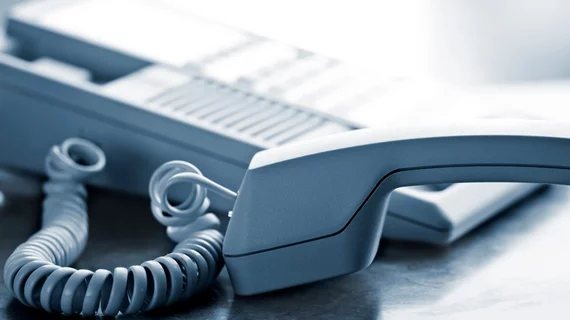Implementing a telephone triage service could cut interruptions to radiology reporting rooms by more than 40 percent while staying budget-friendly, according to recent research out of the United Kingdom.
British radiologists are more in-demand than ever, author Paul McCoubrie, BSc, of Southmead Hospital in Bristol, and colleagues wrote in Clinical Radiology—but a shortage of physicians means practicing radiologists are “struggling to deliver an adequate service.” While image interpretation is widely regarded as a radiologist’s primary duty, up to 44 percent of their work involves non-image interpretation, like consultations with referring providers.
“Non-image-interpretative tasks are often viewed as interruptions to the primary task,” McCoubrie et al. said. “If the two roles are admixed in an unplanned fashion, it causes disruption to image interpretation.”
A wealth of previous work has suggested interruptions to radiology rooms can have serious, detrimental effects on workflow, including deterioration in patient safety, interpretation accuracy, healthcare costs and quality of consultations. Taking phone calls while reading an imaging study means a radiologist is likely to forget key details of the study and have to spend added time re-briefing themselves on the case, making errors all the more likely, the authors said.
With error rates in radiology reads reaching 4.4 percent in recent literature, McCoubrie and colleagues wrote, it’s something hospitals should focus on.
“Patient safety is the priority for any health specialty and service,” they said. “If interruptions have the potential to cause errors in radiology, then attempts should be made to refocus these to as low as reasonably practicable, a principle familiar to those within the specialty.”
The research team conducted a study on the subject at a busy tertiary care center in England, where they observed error rates and physician satisfaction both before and after implementing a telephone triage system designed to divert unnecessary phone calls from radiology rooms. The triage system, which was in place during regular daytime work hours, was staffed by imaging support workers at the hospital who weren’t medically or technically trained. Those employees redirected phone calls based on a written script system with the goal of transferring only appropriate calls to busy radiologists.
The average number of interruptions per day dropped by 43.7 percent after implementing the triage system, the authors reported, and inappropriate interruptions were reduced from one in three to one in five during the course of study. Improvements were also seen in patient safety, workload, reporting efficiency, stress and accuracy—all positive factors for the 36 percent of radiologists who identified interruptions as their most common workplace hindrance.
“This study shows the substantial improvement that introducing a telephone triage service can have on the number and rate of interruptions in the duty radiology environment,” McCoubrie and co-authors wrote. “Although eliminating interruptions is unrealistic, in the future a balance must be sought that prioritizes both image-interpretive and non-image-interpretive duties, without compromising patient safety.”

